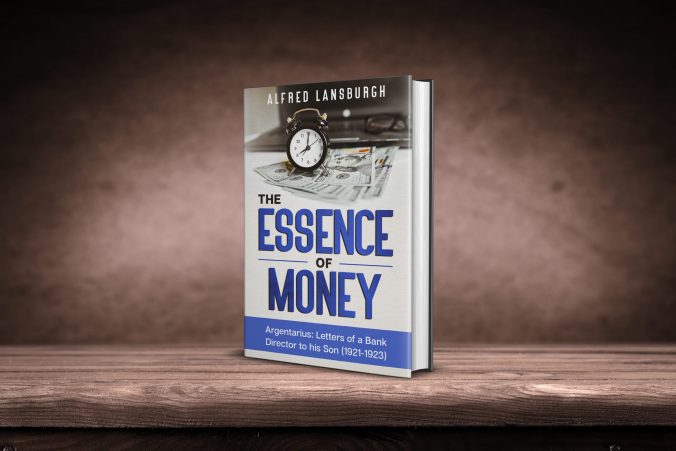Jack Dorsey earned himself a lot of push back, when he spoke about hyperinflation coming to the US a while ago. Recently, Bavarian politician Markus Söder has stated a similar thing for Germany and the media barely reacted.
So, is hyperinflation coming or not?
As I explained in my last article, the current economic situation is historically completely unprecedented and only slightly comparable to the fall of Rome, which means that all I will say below is my pure conjecture.
With that said, let’s look at why I think widespread hyperinflation in the Euro-Dollar System is the most likely scenario.
Before we can go into why hyperinflation is likely to come, we need to first understand what it even is. Common definitions describe it as an inflation that has surpassed 50% per month (or some say per year), while inflation in that context means increase in CPI (consumer price index).
This definition is misleading, for two reasons:
Firstly, inflation historically meant the increase in uncovered money supply. Under this definition, inflation really showed the potential for price increases in all markets and functioned as an early warning sign.
With the new definition, focussed purely on consumer prices, it’s become a useless lagging indicator.
Under a credit money, inflation hits the economy via the Cantillion effect. Persons, companies and industries closest to the source of new unbacked money get access to new currency tokens first. This means nothing else, but that the first effects of money stock inflation, hit closest to the dollar fountain.
So, initially creating money causes the prices of stocks, bonds, derivatives and real estate to go up. Since this is an effect seemingly enriching the rich, so it is welcomed by The Elites™.
Creating money out of thin air can stay confined to the financial markets for a very long time. Only once it has reached a critical level in inflating asset prices, especially real estate, will inflation break the first dam and flow from the financial economy to the B2B economy.
The cause of this dam break moment usually is twofold:
- Prices of resources and real estate get speculated up alongside bonds and co., making it necessary for companies to either increase prices or run at a loss.
- The spiral of paying for debt with new cheaper debt reaches a velocity when the normal business of companies and banks becomes insufficient to ever pay off the debt, so production becomes just a charade to justify ever higher loans.
We saw the first point happening before the financial crisis in 2008, and it was the number one reason for the crash to occur. Unfortunately, instead of letting companies fail or increase prices, the government forced them to resort to point 2. Thus, after a short correction, housing prices got bid up even harder.
Central banks dropped rates to zero and real rates significantly into the negative. Some central banks, like the ECB, even had negative rates on retail bank deposits, effectively punishing banks that did not leverage to the max and lend out everything they can.
Now, before you shake your fists at these evil bankers, consider that the only reason, this has not blown up completely, was the actual decency of the retail bankers.
They refused to go onto the relentless lending spree the central banks wanted them to. Especially during the height of the Covid-19 crisis, when central banks lowered reserve requirements to effectively zero, bankers explicitly kept some remnants of reason in their credit policy.
Sadly, their restraint was far too little and much too late, for we can see the second dam of inflation cracking now.
When the B2B sector cannot compensate the increases of asset prices, resources and real estate any longer nor hide them under fake money, eventually the consumer prices will rise.
This is something that we can see happening since 2019.
Now, rising consumer prices alone don’t cause hyperinflation. There is another factor that needs to come on top, to turn inflation into hyper mode.
This is where the second misleading part of the “50% of CPI” definition comes into play.
Hyperinflation is not merely fast inflation. There is a significant difference between the two. Inflation is when prices increase because the money stock gets inflated. Hyperinflation occurs, when people lose faith in a currency and start to flee.
This fleeing a currency happens in lockstep with the breaking of the dams. First, the banking sector stops using the money tokens to get more money tokens, but rather to get assets. This is when real estate and stock bubbles begin to form.
In the second stage, companies lose faith in the currency and stop focusing on their production, but rather on inflating their share price, buying back stocks, etc.
The third and last stage starts when consumers lose faith in the currency and stop using it for saving. Usually, this begins with the richer citizens, who reduce their cash holdings and invest more into stocks and housing. Then the middle-class follows suit. Finally, the poor people try to flee the collapsing money system, but being unable to afford the better hard assets, they resort to immediate consumption.
Once this stage has started, we get close to the point of no return, after which a collapse of the currency is unavoidable.
As you can see, nowhere in this process did I even mention the CPI inflation numbers and in fact, during Covid-19, we quietly entered stage three before official CPI had even passed 5%.
Thus, a much better indicator of impending hyperinflation is to closely monitor the behaviour of banks, businesses and ordinary people. Which unfortunately means one needs to use the art of praxeology on the data, instead of trying the Keynesian “one number indicator” approach.
To recap, so far, we have analysed the path of inflation approaching hyperinflation up to about December 2021. The interesting question is now, what 2022 and beyond will bring.
If we want to make an educated guess about the future, the only way to do so is to look at historical patterns. Especially the Weimar Hyperinflation of 1923 and the Great Depression of 1929. For a more profound understanding of the first, I recommend reading Argentarius.
When the third stage of inflation is reached, a government and its central bank have three options. The first is to continue the money creation. This is the scenario that inevitably leads into hyperinflation.
The point of no return in this case is crossed, once the money tokens lose their ability to defer a transaction in time. Signs of this happening are, when people relentlessly spend every pay cheque promptly. This is often accompanied by the so called wage-price spiral. Wages and prices race each other to ever higher levels, stores cannot keep up, with relabelling, workers demand salaries to be paid weekly, then daily, then upfront and so on.
Another sign is, when factories and stores go bust do to what Alfred Lansburgh called “selling themselves poor”. This occurs, when prices go up so fast that a factory cannot replenish their supplies because the earnings of the last batch cannot make up for the rising prices in raw materials. Stores in this situation cannot restock their warehouses because wholesale prices are suddenly higher than the resale price they charged for the old stock.
Indicators for a “selling ourselves poor” market are -besides the aforementioned bankruptcies- an increase in barter transactions and state regulations against “usury”.
At the time of this writing, in early April 2022, the Turkish economy has already crossed this line and Germany as well as other EU countries are uncomfortably close to it, with politicians openly discussing price controls.
After this point of no return, a monetary system cannot be saved. A currency reform is inevitable, and every day delay further destroys a nation’s infrastructure and capital stock.
So, what can a government do to prevent this point of no return to be crossed? Obviously, the easy answer is:
“Do the monetary reform NOW!”
Unfortunately, I know of not one case in history, where a government was forward-looking and wise enough to choose a little pain now, over a lot of pain later. I guess, there is no glory in prevention and leaders who aren’t concerned about glory are rare.
One way out is to let people chose their preferred medium of exchange on their own. This usually leads to people reverting to a gold standard. The downside of this approach is that it leads into the so called “deflationary” crash, like in 1929. People, realizing that their gold or gold-backed alternatives are worth significantly more than the qualitatively poor products the inflation has born, resort to saving as much as they can and crunch the inflation economy to a halt.
If the government allows this crunch to happen, the aftermath will be short-lived and the economy will quickly detox and recover.
If the government resorts to interventionism to soften the fall, the effect is the opposite, leading to perpetual crisis that can be resolved only by reform or war. Historically, governments had unfortunate tendencies to resort to the latter.
So now that we have understood why a hyperinflation or a “deflationary” crash are the only probable options, let’s explore, why I consider the first to be the more likely.
I could take the easy way out and end this article, by stating that Keynesianism is the government-backed economic doctrine and that it is afraid of nothing more than deflation, so for this reason alone, hyperinflation must be the outcome.
But where would be the fun with that? Especially since Keynesians have caught themselves in an epic catch-22.
On one hand, they say that in times of recession, the monetary policy must be relaxed and interest rates lowered. On the other, if inflation is running hot, interest rates must be increased and monetary policy tightened.
What their handbook does not say, is what to do when you have both. Recession and high CPI numbers.
Unfortunately, we are entering Q2 of 2022 not only with a beginning recession and CPI inflation around the world approaching double digits, we also have some once in a century crisis scenarios piling on top of each other.
Incompetent government responses to a virus, a ship stuck in the Suez Canal, earthquake in Japan, power outages in China, a war in Europe. It’s hard to imagine a more complete list of “How to destroy global supply chains” than this. So with news like this, the obvious thing to do for a government is to further exasperate the situation. Governments can get really creative with this, maybe locking down some of the most important industrial cities in the world or stopping energy trades with one of the top suppliers of oil and gas.
In this macro environment, if you are one of the economists who still forecasts a growth in the world economy for this year, please send me a sample of whatever it is you are smoking.
To me, it’s clear that by the end of autumn 2022, we will be in a recession like we have not seen in at least half a century. In 2023, we will likely have double to triple digit price increases across almost all product groups, paired with great depression era and beyond declines in GDPs.
This will bring any government under pressure to do something, and the easiest thing to do for a government in that situation is to print money like there is no tomorrow.
And so, the hyperinflation will begin…
Now, the burning question you may have, is:
“Historical hyperinflations always happened in countries competing with a gold standard, so how will a Fiat vs Fiat hyperinflation look?”
More on this… next time.



